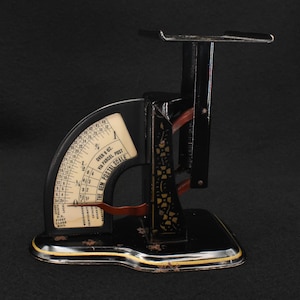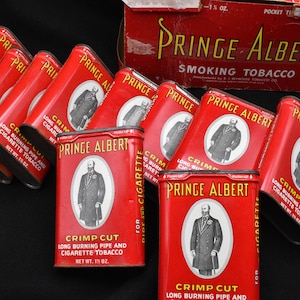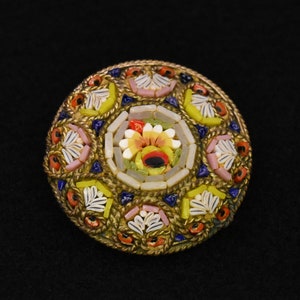



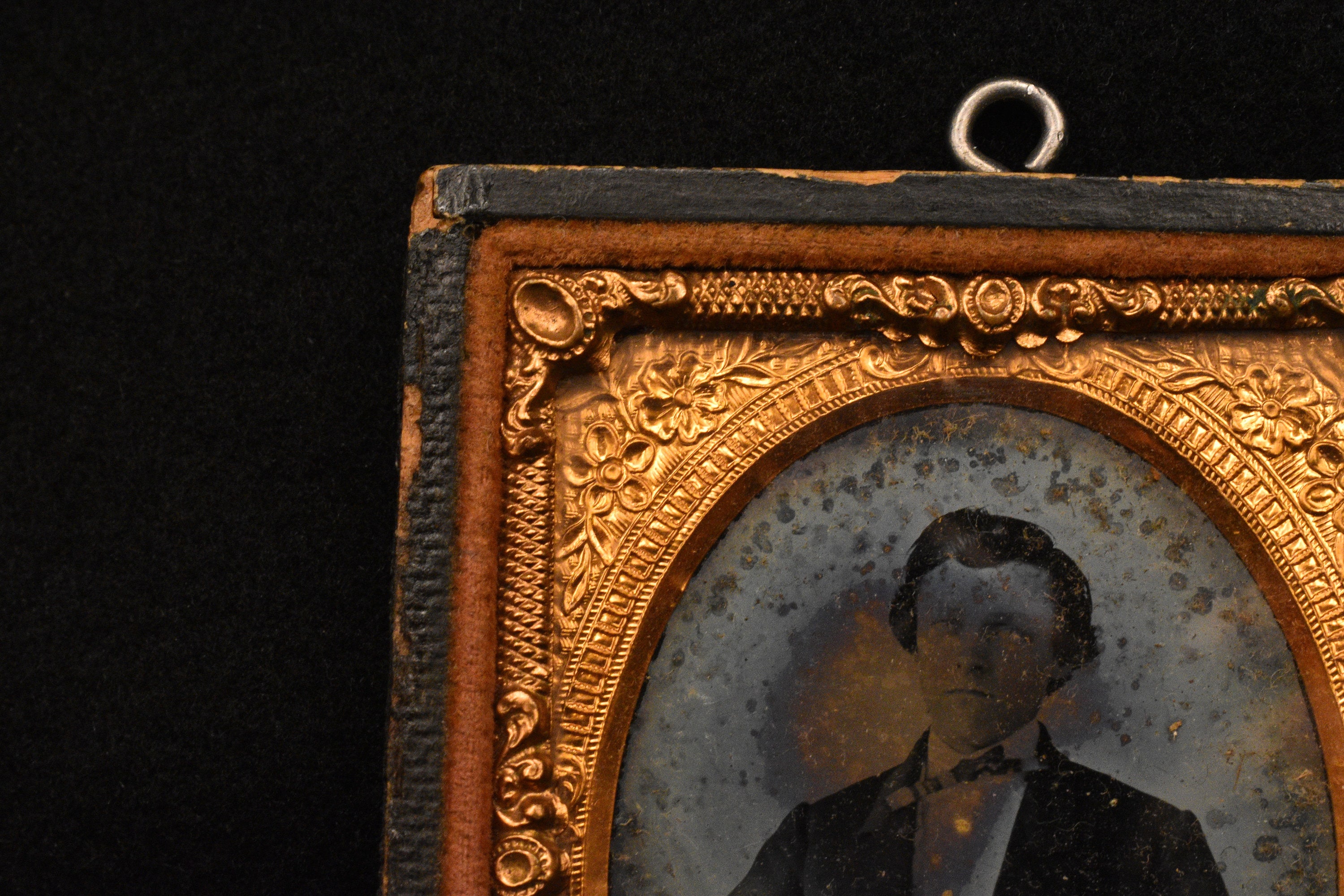
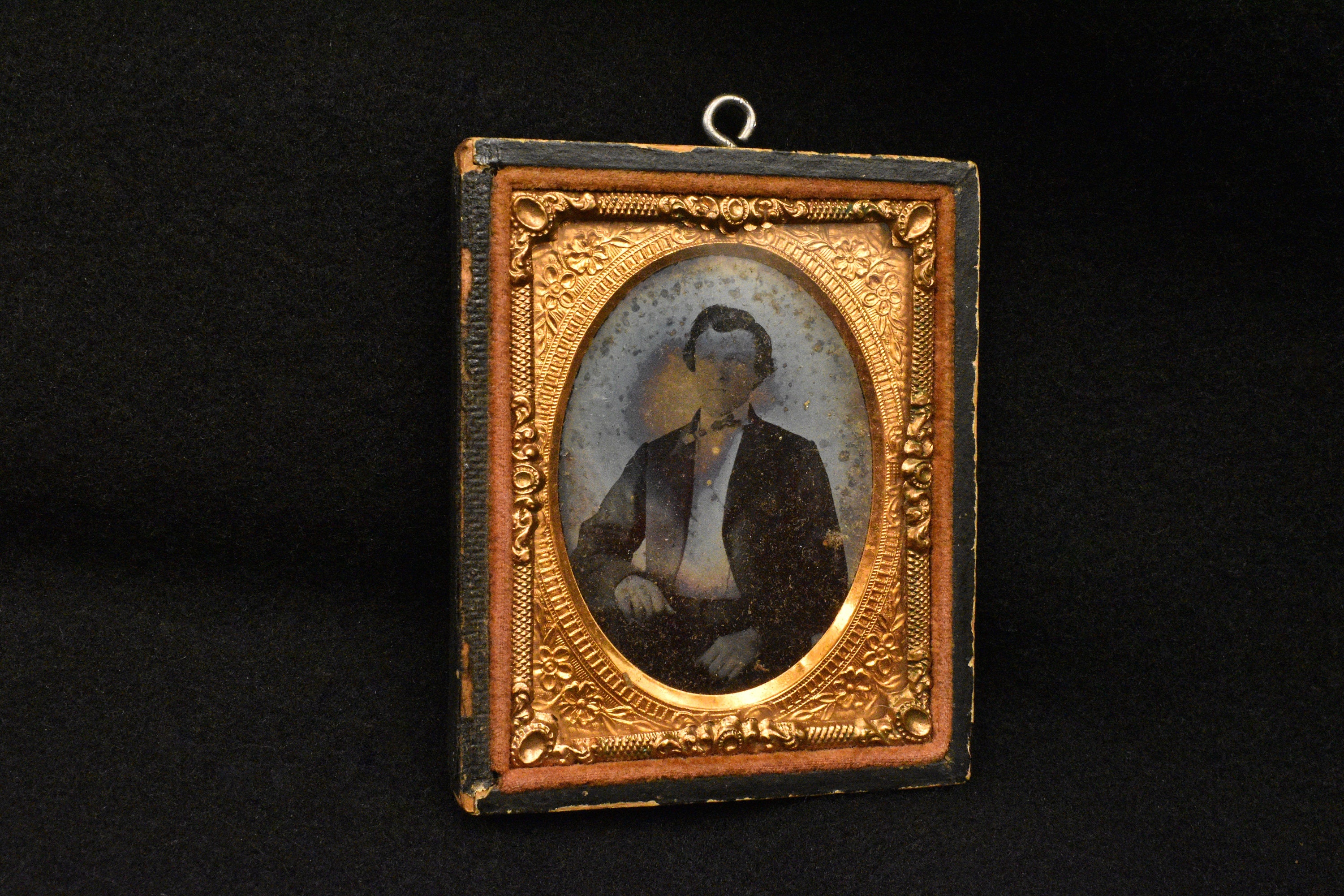
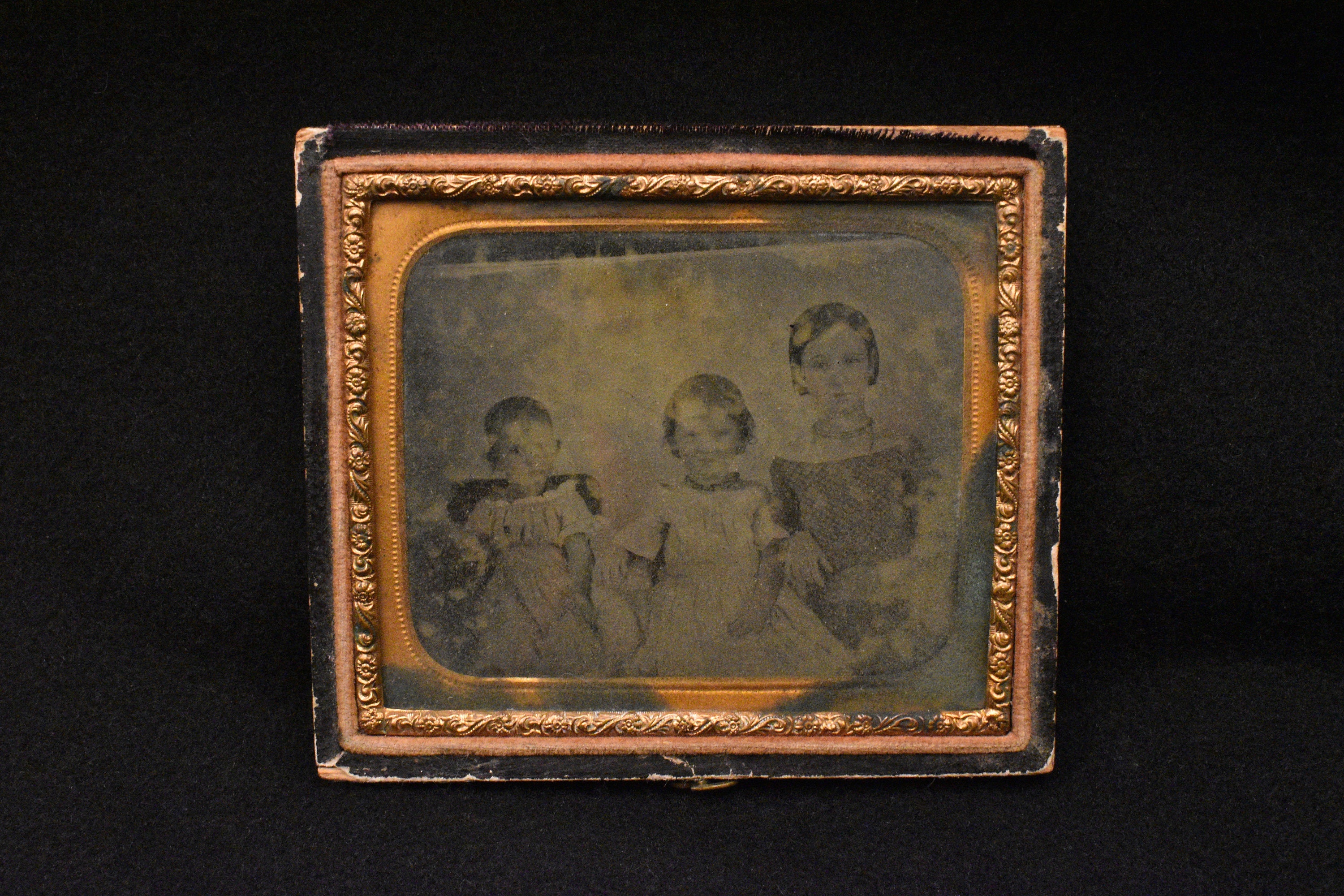
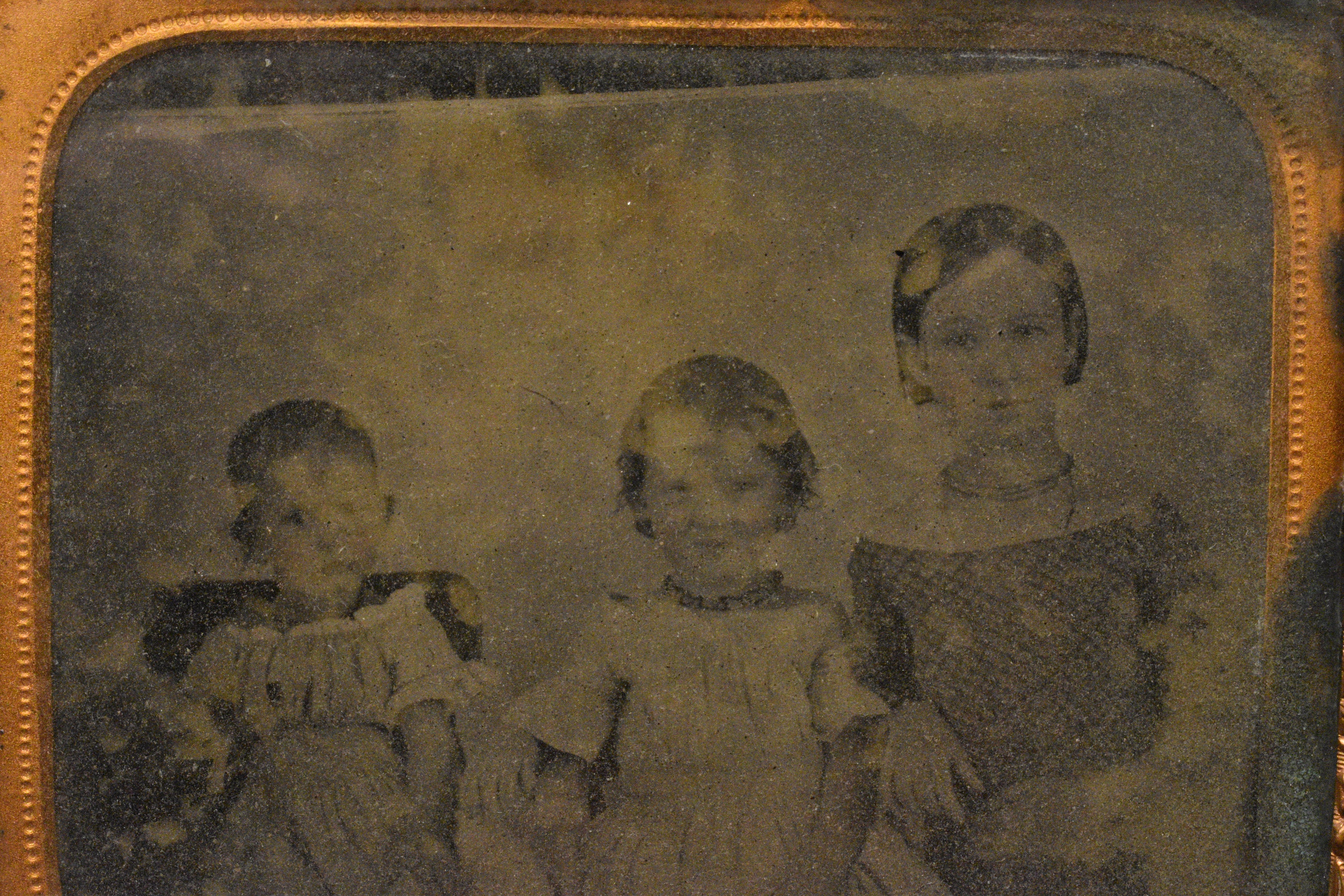
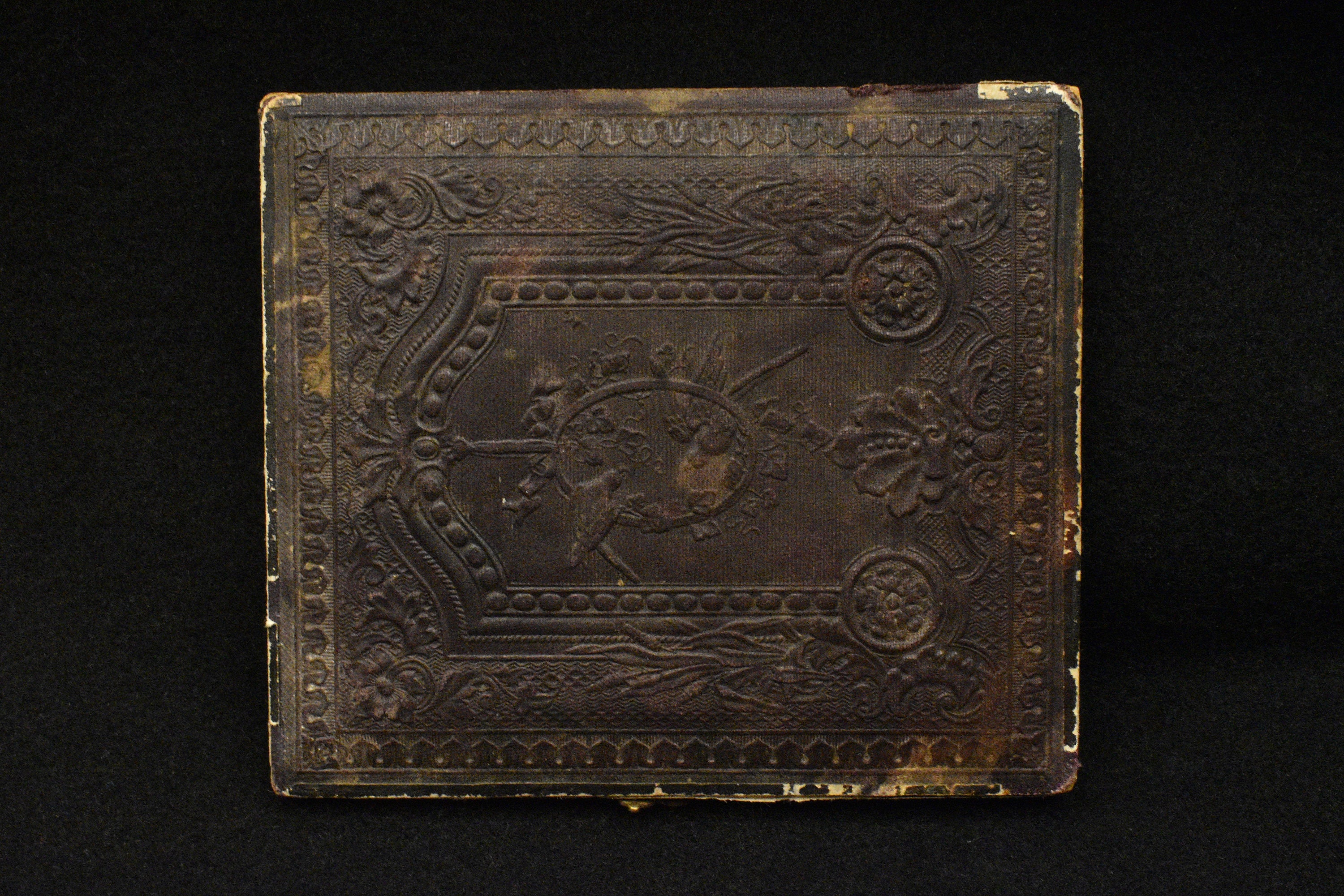
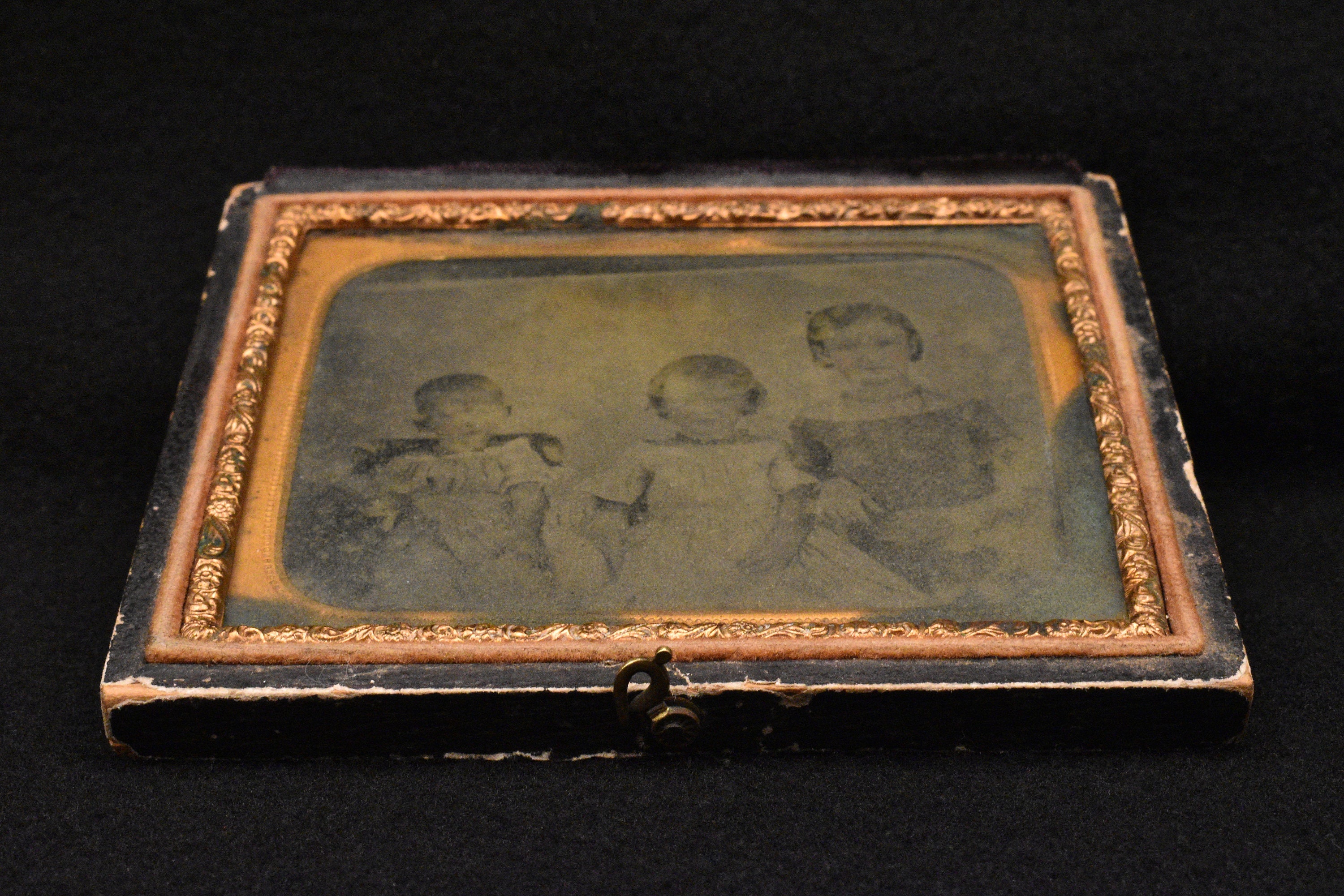
Antiques
2 Antique Framed Daguerreotype and Ambrotype
$76.39
-
DetailsPlease note -TARIFFS PAID! US buyers need not worry about any additional charges! Order with confidence, knowing you won't be surprised with any additional fees.
These two daguerreotype and ambrotype portraits have seen better days, but they are, by no means, ugly... I adore the age that these tintypes wear so well. But firstly, what is an Ambrotype? Or a Daguerreotype, for that matter?
Photography wasn't a new concept during the mid-1800s, when these little gems were created. In fact, research into various chemicals and their combinations with regards to photo-reactivity began in the early 1700s. Several scientists were already experimenting with photosensitive chemicals to great success. In the early 1800s, there was a breakthrough whereby these chemicals were successfully applied to a hard surface in order for the chemicals to darken said surface, depending on exposure to light. Silver chloride was most-successfully used for its photosensitivity to beautiful results, but there were still obstacles to its use - the silver chloride tended to just slip off or easily rub off the imprinted surface and early attempts created nothing more than vague silhouettes. As well, no one had managed to find a way for the silver chloride to cease the development process. As is, photographs would continue to darken in front of the observer's eyes. Eventually, these obstacles were overcome and in 1827, the first landscape photo was taken. It took over 8 hours of exposure, but it proved that photography resulting in a stable image was, in fact, possible. A little over a decade later, another breakthrough. In 1839, Louis Daguerre introduced a thin copper sheet, plated in silver. The Daguerreotype was born and ushered in a new era of photography. Over the next several decades, there were dozens of small advances, from the composition of chemicals used for development to the substrate on which they were developed. In 1851, a process was introduced whereby photographs could be taken and developed in just a few minutes. This method was widely used to develop ambrotypes and tintypes. Ambrotypes produced a negative image onto a glass plate. When presented over a dark background, it revealed beautiful images. Due to the immense advancement in the field, ambrotypes successfully replaced the daguerreotype, but only for about a decade, up to 1860. These were subsequently replaced by tintypes (the same method, but presented on a thin plate of metal, coated in a dark enamel which was used as the support for the photographic emulsion). Tintypes were significantly easier to care for, lacking the fragility of ambrotypes. As a result, true ambrotypes are hard to find.
All of these methods produced a fairly clear black and white photograph, but because they were so easily ruined by fingers and scratches, they were almost always stored in cases and under glass. Given the nature of the process and the photographs, once the image is placed into the frame and under a pane of glass, it's very difficult to tell which of the various techniques was used to create the image. In this regard, my detective skills were tested...
First, the handsome gentleman daguerreotype portrait. This debonaire young man is very well-dressed, as he should be. This is an early tintype and although it was a more widely-used method, these were still on the expensive side, so no room for errors or do-overs. The pose was perfected and, for what was probably 10 or 15 seconds, this young man struck his most austere-looking pose. You may notice that you'll almost never see a subject smiling, in daguerreotype or ambrotypes. This could be for a couple of reasons. Firstly, the shutter on the camera was open for up to a full minute, during which the subject had to keep absolutely still. It's not easy, holding a genuine smile for a minute, so most subjects relaxed their expressions. The second possible reason people didn't smile much in the 19th century - oral hygiene didn't really exist yet. Brushing your teeth was limited to mixtures of crushed sea-shell or talc mixed with essential oils like eucalyptus or camphor that was passing as early toothpaste and toothbrushes that were made with bone or wood and hog bristles (all 3 materials were excellent at holding onto bacteria). As such, many people had attricious teeth and weren't too keen on having them immortalized. We know that this is a daguerreotype because of the metal peeking through the fading silver - it is plainly a copper plate. If it were an ambrotype, the piece behind the portrait would be black enamel. If it were a tintype, the faded area would reveal the dark substrate behind the silver. Even though it's fading, his face is still completely visible, under light. His ornate frame is in very good condition and the frame and backing, though worn, are in admirable condition.
Now for the children. I'm very impressed this image even exists. Not because of the fragility of the ambrotype glass, but because a parent actually managed to get 3 children to sit, unmoving, for almost 30 seconds. Sure, the middle child doesn't look thrilled at the prospect, but her snarky expression is great. The backing behind the ambrotype is starting to chip, so an interesting 3D effect is the result. The original glass ambrotype is slipping slightly in the frame, so we can see the edge of the glass and the enamel peeking out from behind it. Although the image looks faded, the original ambrotype is very clear. There is about a century and a half of dust that has managed to sneak behind the glass and obscure the image, slightly. If opened and cleaned, this would be a remarkable photograph. The copper frame is complete and undamaged, but the copper is oxidizing in several places. The wooden frame is solid, but peeling in areas. Overall, I'm just smitten.
The gentleman measures 7.5 cm x just over 6 cm. The girls measure 9 cm x 9.5 cm.
As always, should you have any questions or comments, I'm always happy to respond to messages almost immediately. -
Shipping & Policies
Shipping from Canada
Processing time
1-2 business days
Customs and import taxes
Buyers are responsible for any customs and import taxes that may apply. I'm not responsible for delays due to customs.
Payment Options
Returns & Exchanges
I gladly accept returns and exchanges
Just contact me within: 3 days of delivery
Ship items back to me within: 7 days of delivery
I don't accept cancellations
But please contact me if you have any problems with your order.
The following items can't be returned or exchanged
Because of the nature of these items, unless they arrive damaged or defective, I can't accept returns for:
- Custom or personalized orders
- Perishable products (like food or flowers)
- Digital downloads
- Intimate items (for health/hygiene reasons)
Conditions of return
Buyers are responsible for return shipping costs. If the item is not returned in its original condition, the buyer is responsible for any loss in value.
Frequently Asked Questions
Can I combine delivery on multiple items?
Of course! We'd be happy to assist. Just send us a quick message and we'll make sure to combine your items into a single package to reduce the shipping costs.
